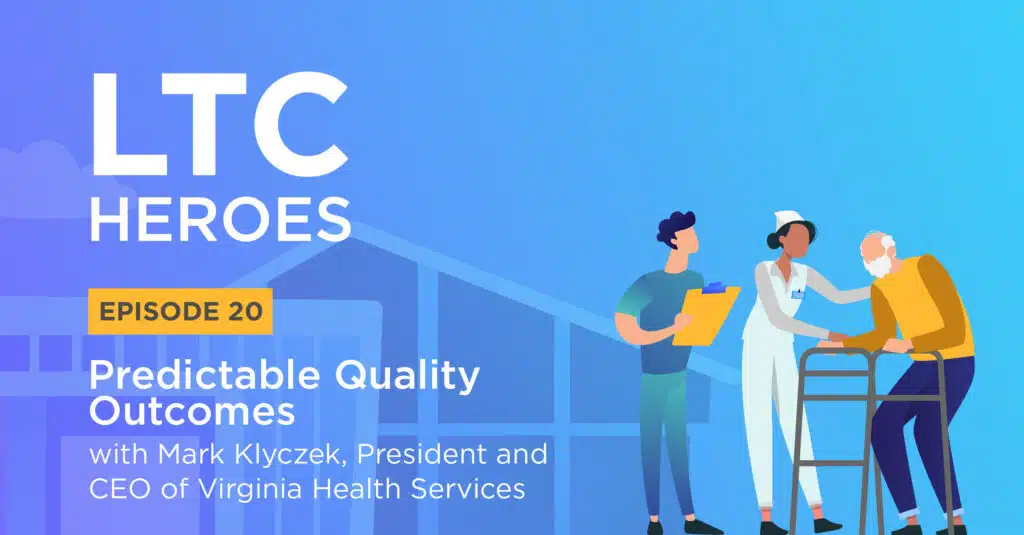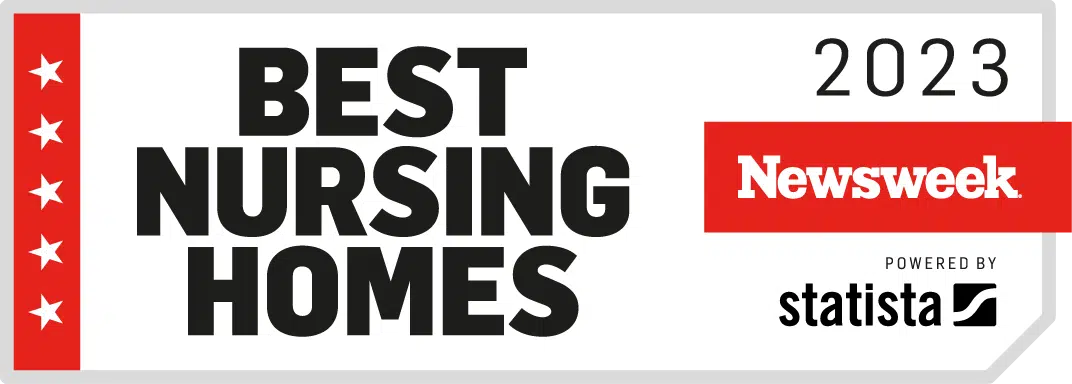Virginia Health Services President and CEO Mark Klyczek found a way to improve nursing home and rehabilitation facilities through incremental change.
Those changes require sharing quality data, which is the key to raising a facility’s standard of care. Quality outcomes not only measure the care provided but also the satisfaction of Residents.
On average, most facilities in the industry receive their evaluations with a six-month delay.
Changing the system for the better
Klyczek decided he would not settle for a delay in providing the care Residents deserve.
So he changed the system.
“If we’re not going to spend the right time finding what the real issue is, then you’re just always going to have that conversation which I dread, which is, ‘that’s just the way things are, and we’ve never been able to change this’,” Klyczek said during his appearance on the LTC Heroes podcast. “And I’m not interested in that conversation.”
Listen to the Klyczek’s conversation with Experience Care’s Peter Murphy Lewis with the player below:
Thinking big may pose challenges, but VHS’s president said he will always continue to push himself and his team “beyond what a nursing home should be able to do.”
Klyczek decided to become more data-oriented and create his own system for checklists using Microsoft Excel. He created it while at Rochester Regional over the course of two-plus years. It’s a method he’s introducing and implementing now at Virginia Health Services. “I’m confident it can be replicated,” Klyczek shared on the podcast.
“I found myself saying, ‘I’ve got to get ahead of the way that quality is reported in nursing homes if I’m going to have an impact,’ ” he recalled. “And, as it turns out, when we got ahead of it, we actually had a bigger impact than I ever thought we could.”
Dedication to providing better care every day
The key to improving quality, according to Klyczek, is dedicating oneself to identifying the sources of error.
“If we’re not going to be honest with ourselves about what the root cause is, and we come to a conclusion too quickly, we’re probably not going to solve the problem completely,” he said.
He introduced a root-cause analysis tool developed by the Institute for Healthcare Improvement (IHI). This includes an action hierarchy tool that Klyczek and the team use to make actionable and meaningful changes. He now finds it easier to develop checklists and protocols that help the facilities make steady progress in the quality of care they provide.

He begins by tackling the problems that are off by just a single percent or less. After he notices the trends, he will approach the staff and ask: “What are the barriers? How do I help you improve pressure ulcers, because we’re seeing it happens more often with this type of patient?” Klyczek makes sure to get as much information to the Certified Nursing Assistants (CNAs) and Licensed Practical Nurses (LPNs) as possible to enable them to make the best decisions.
“Because I can’t be there every day, and the nurse manager can’t be there every day, we depend on the CNAs and the LPNs to assume responsibility,” he said.
Klyczek also provides his team with a data analyst, who then gives the Director of Nursing or Assistant Director of Nursing at every facility the tools they need.
It’s a hard job, he says, but a rewarding job to work in long-term care. You have to support the team to be successful.
Guest blog provided by Cameron Zargar from the LTC Heroes team.








